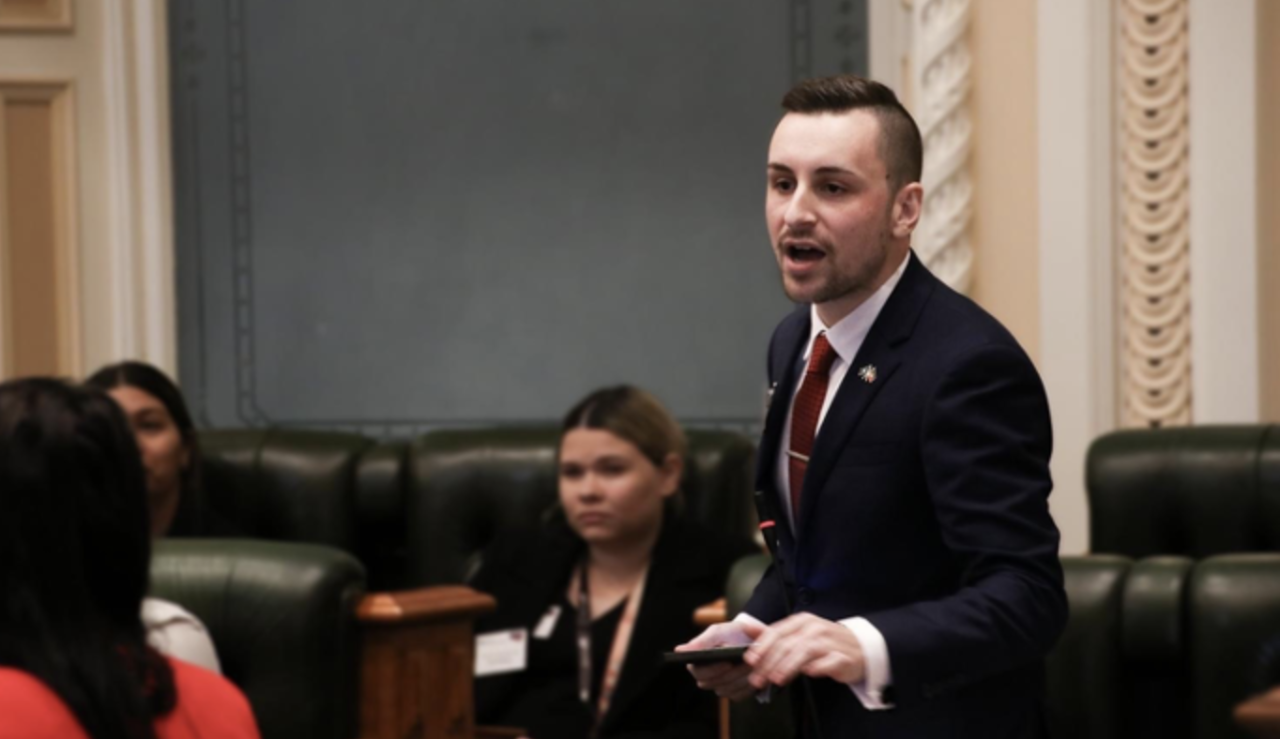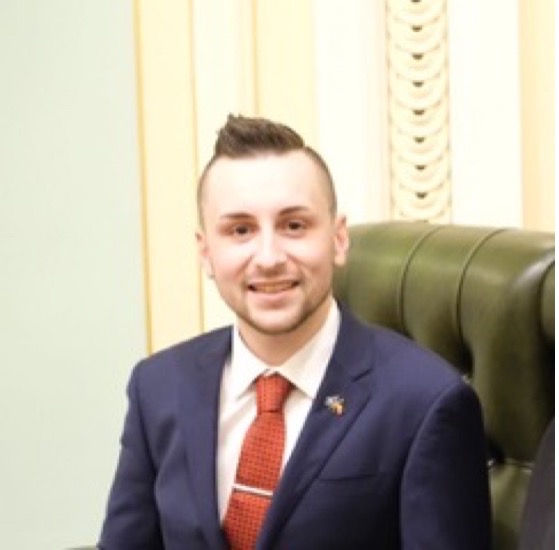Inside ANZ
The opportunities and challenges for First Nations youth advocacy in Queensland
“Co-existence is key and a collaborative effort is needed by both Indigenous and non-Indigenous peoples to break the status-quo way of thinking . . . . The ability to walk in both worlds and without doubt, with your family, your community and culture.” - Allan Pard, Piikani Nation Elder from Canada.

Dempsey speaking in his capacity as Youth Premier on the floor of the Queensland Legislative Assembly.
In the most recent QLD Indigenous Youth Leadership Program, a group of 50 youth leaders were asked to raise their hands if they were interested in a career in politics.
No one put their hand up. Not even me.
In Australia, our federal system represents a blend of political traditions – namely ‘Washminster’ – a combination of the ‘Washington’ and ‘Westminster’ systems of the US and UK respectively. Combining the practices of two Western cultures is not a particularly difficult task.
The greater challenge lies in incorporating Indigenous and non-Western ideals into political systems and structures when they’re fundamentally at odds with each other.
Therein lies the dilemma for many young Indigenous leaders – like me.
The challenges
Stuck walking between two worlds – one of culture, connection and Country; and another of systems, processes and structures. But the importance of balancing the two worlds can’t be denied – how else will we achieve outcomes for our people in a Western-centric world?
Cultural practices of First Nations people, and the important role of Elders in determining the way forward, mean First Nations youth face cultural conflict when stepping up into leadership roles and trying to drive change for our people. It is a balancing act of adhering to cultural protocols and operating through a Western system. Many Elders believe this is incompatible with cultural practices.
This was evident during the deliberations over the Uluru Statement from the Heart in 2017. While there was broad consensus for the Statement, there wasn’t universal accord. Indeed, there was a chorus of different opinions – and rightly so – as we cannot expect the diverse voices of the Aboriginal and Torres Strait Islander peoples and communities to definitively agree on every issue facing our people.
Allan Pard, Piikani Nation Elder from Canada said: “Co-existence is key and a collaborative effort is needed by both Indigenous and non-Indigenous peoples to break the status-quo way of thinking that has been prevalent for too long. . . . The ability to walk in both worlds and without doubt, with your family, your community and culture.”
The opportunities
The QLD Indigenous Youth Leadership Program is an annual gathering of First Nations youth from around the state that helps young indigenous people understand how leadership works within the Queensland political climate.
Since 2004, more than 630 Aboriginal and Torres Strait Islander youth have participated in the program – with many returning in subsequent years as mentors.
The program is the flagship component of the Queensland Indigenous Youth Leadership Strategy. It provides a platform for First Nations people, 18-25 years of age, to come together and strengthen their leadership skills and build their capacity to drive change in their communities.
The program equips youth with the tools and knowledge to advocate for their people and culture in modern western politics. It is an opportunity that offers something to everyone - community and grassroots activism, networking and career prospects, cultural healing and connection and the political knowhow.
I was privileged to be involved in this year’s program. I had the honour of meeting passionate young people from all parts of Queensland and was humbled to be elected by my peers as Premier of the Eric Deeral Indigenous Youth Parliament – named in honour of the first Indigenous QLD State MP.
It was heart-warming to see the passions of these young people, developed over the week-long program, culminating in an equally passionate debate in the QLD Parliament.
At the beginning of the program no one raised their hand, however as it turns out, advocacy comes in many shapes and sizes, and parliamentary politics is only one element of the equation. With the right tools and education, we were able to realise our potential as leaders within our own communities.

Participants of the QLD Indigenous Youth Leadership Program with QLD Minister for Youth Affairs The Hon. Meaghan Scanlon MP and Gubbi Gubbi man Lance McCallum MP - Member for Bundamba.
The lessons
The right to vote for Aboriginal and Torres Strait Islander peoples was legislated in 1962 and further equalities were achieved in 1967 by way of the Referendum. However, it was not until 1984 that First Nations Australians gained full electoral equality when enrolment was made compulsory as it already had been for non- Indigenous Australians.
Despite this achievement by our Elders, many First Nations people do not participate in the Western democratic process. For many this is because sovereignty was never ceded. However, the lower rates of voting amongst Aboriginal and Torres Strait Islander communities reflect how disconnected the Western and Indigenous worlds are.
We have come so far, yet there is still a lot of work to be done. We must ensure the views of First Nations people are represented, heard, acted upon and embraced in the Western-centric political system.
It is my belief advocacy can be achieved in many forms, however you’ve got to at least be in the game if you have any hope of winning it.
And while there remains the challenge of walking between the two worlds, these vital programs equip First Nations youth to navigate this more effectively for the purposes of achieving outcomes for our people.
My key takeaway from this experience would be ‘stand up and be counted’! If we don’t put our hands up for our communities, who will?

Participants of the QLD Indigenous Youth Leadership Program with Quandamooka woman and QLD Minister for Communities and Housing The Hon. Leeanne Enoch MP.
Dempsey Bloom is a Know Your Customer Team Leader at ANZ
Related Articles
Inside ANZ
Self-belief and persistence helps Bhanu overcome adversity
Inside ANZ
